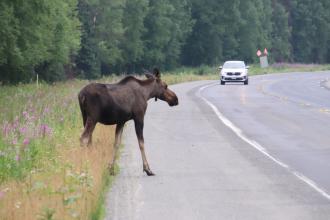Photo radar, and stories from those close to people killed by a fast-moving vehicle
In the September issue of the BCMJ, Ms Fahra Rajabali and colleagues wrote that the gross cost for the leading causes of injury (including transport incidents) in 2013 ranged from $547 to $922 million.[1] Dr Richardson’s editorial in the same issue asked for good studies,[2] and Dr Cadesky asked us to use science and stories to appeal to people.[3]
Here is some science: kinetic energy equals one half mass times velocity squared. In real-life terms, a motor vehicle causes more damage if it is moving fast. In a fact sheet on road safety,[4] the World Health Organization states the following:
- “An increase in average speed of 1 km/h typically results in a 3% higher risk of a crash involving injury, with a 4–5% increase for crashes that result in fatalities.”
- “For car occupants in a crash with an impact speed of 80 km/h, the likelihood of death is 20 times what it would have been at an impact speed of 30 km/h.”
- “Pedestrians have been shown to have a 90% chance of survival when struck by a car travelling at 30 km/h or below, but . . . almost no chance of surviving an impact at 80 km/h.”
- “Speed cameras are a highly cost-effective means of reducing road crashes.”
In the years 2008 through 2017, 3268 people died in motor vehicle incidents in British Columbia. Among the 298 people killed in motor vehicle incidents in BC in 2017, 163 were younger than age 50.[5] BC used to have speed enforcement by photo radar. Gordon Campbell promised to discontinue photo radar in the election campaign of 2001. He won the election, and scrapped photo radar.[6]
Some people might argue that it is ghoulish for doctors to engage with the family and friends of people who have died because of a speeding vehicle. It is not. If the family consents to sharing their story about a loved one killed by a fast-moving vehicle, the doctor and the family could ask a writer to draft a story for publication. Speed kills. Photo radar reduces speeding. I suggest that Doctors of BC recommend that the BC government bring back photo radar.
—Robert Shepherd, MD
Victoria
This letter was submitted in response to “The economic burden of injuries in British Columbia: Applying evidence to practice.”
Doctors of BC declined to comment because it does not have a policy or organizational position on photo radar.
References
1. Rajabali F, Beaulieu E, Smith J, Pike I. The economic burden of injuries in British Columbia: Applying evidence to practice. BCMJ 2018;60:358-364.
2. Richardson D. Spot-on studies. BCMJ 2018:60:341.
3. Cadesky E. Pseudoscience, anti-science, and woo: This time it’s personal. BCMJ 2018;60:343.
4. World Health Organization. Road safety – speed. Accessed 10 September 2018. www.who.int/violence_injury_prevention/publications/road_traffic/world_report/speed_en.pdf.
5. BC Coroners Service. Motor vehicle incident deaths 2008–2017. Accessed 10 September 2018. www2.gov.bc.ca/assets/gov/birth-adoption-death-marriage-and-divorce/deaths/coroners-service/statistical/mvi-incident.pdf.
6. Lunman K. BC scraps photo radar as cabinet debuts on TV. The Globe and Mail. 28 June 2001. www.theglobeandmail.com/news/national/bc-scraps-photo-radar-as-cabinet-debuts-on-tv/article4150046.

